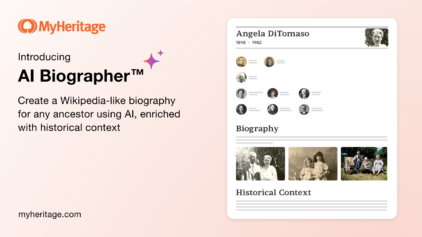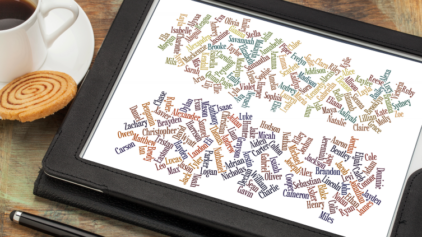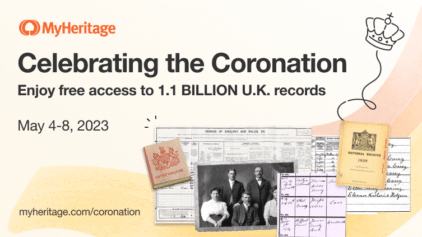

 Sometimes the best sources of information are the relatives we have around us. And yet they’re often overlooked as sources for family history research, perhaps because we take their memories for granted, or perhaps because we no longer see particular relatives as often as we’d like.
Sometimes the best sources of information are the relatives we have around us. And yet they’re often overlooked as sources for family history research, perhaps because we take their memories for granted, or perhaps because we no longer see particular relatives as often as we’d like.
But relatives are an invaluable source of information if you’re serious about genealogy research. In fact, in last week’s interview story, Rajesh Haldipur had built an extensive tree almost entirely from word-of-mouth evidence.
If you are interested in interviewing family members for your research, here are a few ideas to get you started.
1. Brainstorm ideas beforehand. Develop some ideas for what you want to achieve and what sorts of questions you might want to ask. What kind of information are you looking for? What branches of the tree are you trying to develop? What information might this particular family member have?
2. Create a list of questions or topics to cover. It’s important to define the focus of your interview, and to have at least a broad framework for how the conversation is going to progress. Once you have these ideas, turn them into questions or topics for discussion, so you know what you’re looking to find out when you meet up to talk.
3. Decide how to record information. There are several ways to record an interview: taking notes, using a voice recorder, even shooting a short video. Be aware of the drawbacks of your chosen method beforehand. If you’re taking notes, you’ll need to be selective, since you won’t have time to note word for word (unless you know short hand); if you’re using electronic voice recorders, ensure they’re close enough to record the exchange, and make sure you’re got a set of spare batteries on hand.
4. Schedule a meeting with the person in advance. It goes without saying that you should organize things well in advance. Although it’s tempting to pop out your notebook and have a 10-minute chat on the fly, this is a usually a poor strategy for gathering information. Advance notice will give a family member time to think about the topics in question, and even to dig up any relevant documents or items to assist you in your search.
5. Use family photos. An engaging way to begin an interview is to make use of old family photos, perhaps by having your interviewee confirm the identities of the people involved. Often people identify more strongly with visual information than with words alone.
6. Ask open questions. Sometimes you want to ask closed (‘yes or no’) questions, particularly if you just want to confirm a name or place. Much of the time, however, an open question will yield better results. If you’re asking about a grand-uncle’s personality, for instance, you may get a lot more information by asking “What was he like?” than by asking “Is it true he was a joker?”
7. Be willing to deviate from the plan. It’s helpful to have a set of questions and topics prepared, but these shouldn’t act as a straitjacket for the interview. If the interview seems to be straying off onto a tangent, you may want to bring it back onto topic; but you also may not want to. Sometimes tangents are as interesting as the questions you’ve prepared.
8. Listen. It’s tempting to think that, because you’re taking notes or recording the conversation, you don’t need to pay full attention to what the interviewee is saying. Sometimes, alternatively, interviewers spend so much time thinking about their next question that they forget to listen to what they’re being told. Don’t make this mistake. You need to listen carefully to what the person’s saying, and how they’re saying it, so that you can probe and ask follow-up questions if it sounds like something is worth exploring in more depth.
9. Leave a memory. It’s important to show gratitude and thanks for the person’s cooperation, so if possible leave something relevant, like a copy of the tree so far, or a photo the interviewee didn’t know about. As well as being the polite thing to do, if you get home and realize you forgot to ask something, this will make your interviewee far more likely to help you out if you call back.
10. Record the information as soon as possible. Once you’re home, you should get the information transcribed into a neat document as soon as possible. This is true whether you took notes or recorded the interview. It’s important to organize and structure the material while a memory of it is still fresh in your mind.
Good luck with your interviews!









